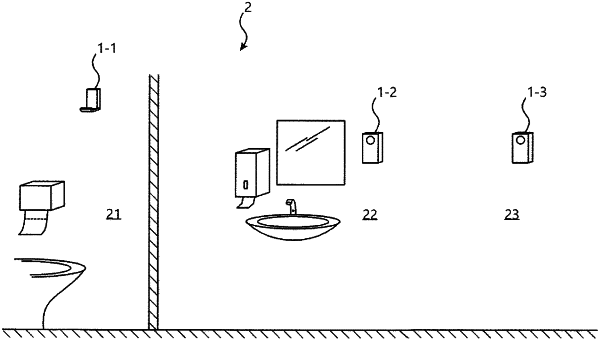| CPC G06V 10/143 (2022.01) [G01J 1/42 (2013.01); G06T 7/73 (2017.01); G06V 20/52 (2022.01); G06T 2207/20024 (2013.01); G06T 2207/30196 (2013.01); G06T 2207/30232 (2013.01)] | 18 Claims |

|
1. A method for detecting presence and absence of a creature, the method comprising:
receiving an input signal from a radiation sensor;
applying a first low-pass filter to the input signal with a first time constant and generating a first filter output;
applying a second low-pass filter to the received input signal with a second time constant and generating a second filter output;
determining a presence of a creature by comparing a slope of the first filter output to a predetermined value;
setting a first threshold based on the second filter output;
decreasing the second time constant and thereafter waiting until the second filter output becomes equal to the first filter output within a predetermined tolerance;
increasing the second time constant;
calculating a difference between the first threshold and the second filter output;
adjusting the first threshold based on the second filter output; and
determining an absence when the first filter output falls below the first threshold.
|